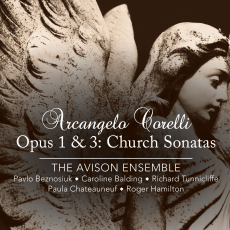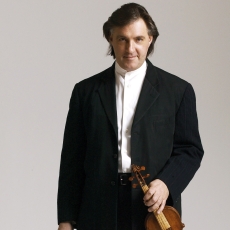The Avison Ensemble - Corelli: Opus 1 & 3 - InfoDad.com
Trends in music have to start somewhere, and while it may not always be possible to pinpoint the exact first time a particular approach or type of piece was composed, there is frequently a way to discover some of the most influential and very early examples of specific types of music. Corelli's Op. 1 Church Sonatas are a case in point, Although not the first such set to be published - others had been issued for more than 70 years when Corelli's appeared in 1681 - these 12 Corelli works became landmarks in Western classical music for their poise, balance, arrangement of movements, harmony, thematic creation and development, and just about all the other characteristics that collectively make music the communicative medium that it is. The first four published groups of works by Corelli alternate in style between Church Sonatas (Op. 1 and Op. 3) and Chamber Sonatas (Op. 2 and Op. 4), although in fact Corelli himself simply called the pieces Sonate a trè. The influence of these works on contemporary and later composers is difficult to overestimate and also difficult to understand from a modern viewpoint that looks back more than 300 years. Corelli essentially perfected forms that later composers drew on, modified, expanded and altered while always keeping one eye, figuratively, on the Corelli model. Corelli's sense of instrumental elegance, his near-perfect balance among the three melodic instruments and continuo, his methods of connecting certain sonata movements and contrasting others - all these became part and parcel of later musical development and led, inevitably only with hindsight, to sonata-form works by Vivaldi, Bach and later composers. The Avison Ensemble's excellent, highly idiomatic performances ensure that the music never sounds fusty or old-fashioned - quite the contrary. Pavlo Beznosiuk (who leads and plays violin), Caroline Balding (violin), Richard Tunnicliffe (cello), Paula Chateauneuf (archlute), and Roger Hamilton (harpsichord and organ) collaborate seamlessly in these works in a way that makes the music both elegant and exciting. The excellent SACD sound provides an aura of both intimacy and clarity to the sonatas, and the performances are so well paced and transparently balanced that it is hard to imagine better readings. Classical instrumental music does not really start with these Corelli works, but it certainly grew from them in important ways, and this recording deserves to be a foundation of many listeners' collections.


